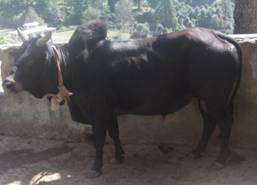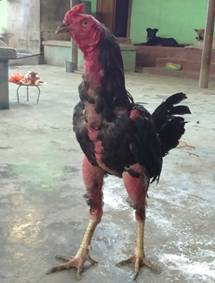New Delhi: Dr Trilochan Mohapatra, Secretary, Department of Agricultural Research and Education (DARE) and Director General, Indian Council for Agriculture Research (ICAR) presided over a ceremony held at Krishi Bhawan, New Delhi on August 23, 2016 for awarding certificates to the applicants of breed registration.
Speaking on the occasion, Dr T Mohapatra appreciated the efforts of ICAR in cataloguing the animal genetic resources of the country and emphasized that registration of breeds will create a sense of ownership among local communities responsible for development of breeds. Dr Mohapatra stressed that the registration of various unique populations as breeds shall help in inventorization, improvement, conservation and sustainable utilization of animal genetic resources of the country.
Registration is documentation of the knowledge, skills and techniques (KST), and biological resources of local communities. Recognizing the need for an authentic national documentation system of valuable sovereign genetic resource with known characteristics, Indian Council of Agricultural Research (ICAR) initiated the mechanism for “Registration of Animal Germplasm” through National Bureau of Animal Genetic Resources (NBAGR). In 2008, ICAR constituted a Breed Registration Committee (BRC) under the chairmanship of Deputy Director General (Animal Science), ICAR which includes Assistant Director General (AP&B), ICAR; Assistant Director General (IP&TM), ICAR; Animal Husbandry Commissioner or his nominee; representative of National Biodiversity Authority; and Director, NBAGR as permanent members for the said purpose. This mechanism is the sole recognized process for registration of “Animal Genetic Resources” material at national level.
List of Awardees included Dr P S Bhandari, Chief Veterinary Officer, Department of Animal Husbandry, Champawat, Uttarakhand was honoured for registration of Badri cattle of Uttarakhand; Dr S Jeyakumar, Senior Scientist along with 7 others form ICAR-CIARI, Port Blair was awarded for Teressa goat of A&N Islands; Dr T J Harikrishnan and Dr T. Ravimurugan were awarded for Kodi Adu goat and Chevaadu sheep of Tamil Nadu respectively; Dr Susanta Kumar Dash, Professor, OUAT, Bhubaneswar for Kendrapada sheep of Odisha; Dr (Ms) M Catherine Rutsa, Assistant Professor, Nagaland University for Tenyi Vo pig of Nagaland; Dr S Jeyakumar, Senior Scientist along with 8 others were awarded for Nicobari pig of A&N Islands; Dr Galib Uz Zaman and Dr Subimal Laskar, Professor, AAU, Khanapara for Doom pig of Assam and Dr Ranadhir Singh from CAU Imphal, Dr P K Vij and Dr M.S. Tantia from ICAR-NBAGR Karnal for Kaunayen chicken of Manipur.
The Breed registration Committee in its meeting on 21st June, 2016 at New Delhi approved registration of nine new breeds of livestock and poultry. This includes one breed of cattle, two breeds each of goat and sheep, three breeds of pig, and one breed of chicken. After including these newly registered breeds, total number of indigenous breeds now in the country is 160, which include 40 for cattle, 13 for buffalo, 26 for goat, 42 for sheep, 6 for horses & ponies, 9 for camel, 6 for pig, 1 for donkey and 17 for chicken.
| Badri cattle: These are indigenous cattle available in hilly areas of Uttarakhand. Badri cattle are small in size having long legs and varied body colours – black, brown, red, white or grey. These are well adapted to the hilly terrain and climatic conditions and comparatively more resistant to diseases. Estimated population is approximately 16 lakhs.
|
 |
 |
Teressa Goat: It is an indigenous goat breed maintained by Nicobari tribal farmers of Nicobar group of islands. These goats are generally tall, sturdy, brownish or dark tan or black or white in colour with white and black patches. Adult body varies from 15 to 79kg. Estimated population is about 7,721.
|
|
Kodi Adu Goat: Kodi Adu goats are native to Thoothukudi & Ramanathapuram districts of Tamil Nadu. These are tall, long, lean and leggy animals with compact body. They are reared mainly for meat. Adult body varies from 15 to 59kg. Population of these goats is about 1,67,000. |
 |
 |
Chevaadu sheep: Chevaadu sheep are found in Tirunelveli district of Tamil Nadu. Animals are small to medium in size. Two colour variant viz. light brown and dark brown or tan are present. Adult body varies from 18 to 39kg. Estimated population is about 1,58,200.
|
| Kendrapada sheep: Breeding tract ofKendrapada sheep comprises of six coastal districts of Odisha viz. Kendrapada, Jagatsingpur, Cuttack, Puri, Jajpur and Bhadrak . These sheep are mostly brown in colour. Adult body varies from 24 to 30kg. Estimated population is about 1,23,000.
|
 |
 |
Tenyi Vo pig: These are indigenous pigs reared in Nagaland mainly for pork production. Tenyi Vo pigs have strong and long tapering snout, small erect ears and bright alert eyes. Adult body varies from 35 to 50kg. Estimated population is about 60,000-70,000 |
| Nicobari pig: Nicobari pigs are indigenous
pigs of Nicobar Islands and are reared by Nicoabri tribes since time immemorial. They are fast runner. Adult body varies from 26 to 61kg.Estimated population is about 35,000. |
 |
 |
Doom pig: Doom pigs are distributed in Dhubri, Bongaigaon and Kokrajhar districts of Assam state. These are black in colour and have short concave snout. Adult body variesfrom 36 to 50kg. Estimated population is about 3,000.
|
| Kaunayen chicken: Its breeding tract consists of Thoubal, Imphal West, Imphal East and Bishnupur districts in the valley region. Some birds are also available in hill region consisting of Chandel, Churachandpur, Senapati, Ukhrul, Tamenglong districts. Kaunayen birds have elongated body with long neck and long legs. And are used for cock fighting. Estimated population is approximately 60,000-80,000.
|
 |


































































